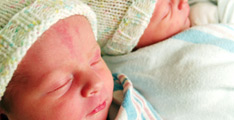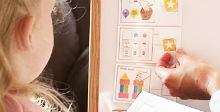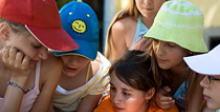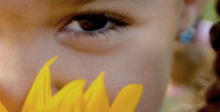Internal mini form
Contact Us Today
For twins, disability can strengthen relationship
Linda Mastrandrea is two-time Paralympian and a well-known Chicago attorney who is a strong advocate for the rights of disabled persons. But what people may not know about her is that she is a member of the population that has fascinated researchers for hundreds of years: She is one of a set of twins.

They were born in 1964. Linda was born four minutes after her sister, Laura. Although the sisters are fraternal, they are similar in many ways, save for the fact that Laura is completely able-bodied, and Linda, diagnosed with Cerebral Palsy, uses a wheelchair. Not to mention, Linda is a Paralympian and Laura is not.
“I think we were, and are, close because we are twins, not necessarily because I have CP,” said Laura, who is a resident of Chicago.
But there are challenges that occur when one twin has a disability, and the other does not. And the phenomenon of twins where one has Cerebral Palsy and the other does not is surprisingly common, and growing as the number of multiple births continues to escalate.
That means parents, not only of twins and multiples but also of children where one or more has a disability, may navigate some challenging situations as their children grow and mature. But the good news is that a child’s disability need not be a barrier to close, supportive lifelong relationships among siblings.
Alike, but different
One of the most cherished relationships one can enjoy in life, siblings are the people that will most likely experience life in the same way. Often times their closeness is based on a set of shared experiences within a family; this is particularly true if they are close in age.
The most intense of sibling relationships are often experienced by twins, be they fraternal (non-identical who share one-half of their DNA with their sibling) and identical (the same DNA). Twins go through life as a unit – they are developing the same interests at the same time, they are in school together, and are physically developing in tandem.
This circumstance, whether the twins are identical or not, often invites comparisons. But how does that play when one twin has Cerebral Palsy, and the other does not? And what is the effect on the self-esteem of both siblings?
For Linda, those challenges made her bond with her sibling stronger.
“The challenges [occurred mostly] when we were younger,” she remembered. “My sister was very protective of me, and very sensitive to me being made fun of or hurt. I think my parents shied away from encouraging her to do things that I couldn’t also do, like sports, as well.
“As siblings you’re always compared; as twins even more so,” Mastrandrea said. “I don’t remember any malice in it though.”
The challenges of raising children with Cerebral Palsy with other children are already unique for their parents. When a child is born with a disability, a significant amount of a parent’s energy is expended meeting the needs of that child. That, although unintentional, can lead to a deficit of attention paid to the other siblings.
Now, to a parent, that may look like a recipe for resentment, especially among twins, who already experience an intense connection. Once siblings understand the needs of their other halves, most of these self-esteem sapping issues are rendered moot. When the family develops and grows together their relationship refines, uniquely.
A growing issue
It’s difficult to know how many sets of twins or multiple births are comprised of at least one child with Cerebral Palsy because there’s been very little research on the topic. However, one 1993 study spearheaded by the National Institute of Neurological Disorders (NINDS) and Stroke and the California Birth Defects Monitoring Program (CBDMP) found that twin pregnancies produced a child with Cerebral Palsy more than 10 times as often as single-birth pregnancies.
NINDS and CBDMP researchers examined 2,985 individuals from 1,537 sets of twins born between 1983 and 1985 in four northern California counties. They found:
- Of 1,537 sets of twins, 20 children in 18 twin sets had Cerebral Palsy
- Twins born at a normal birth weight (more than 2,500 grams) were at an increased risk (more than three and half times more at risk) of Cerebral Palsy when compared to singletons born of normal birth weight
- Approximately seven out of every one thousand twin children had moderate or severe Cerebral Palsy
- More than 10 twin pairs out of every 1,000 twin pregnancies had Cerebral Palsy in one or both members
- Twins who survived a fetal death of their co-twin were 108 times more likely to have Cerebral Palsy than single children and 13 times more likely than twins whose co-twin survived
The study determined that the nature of twin pregnancy – which is often very high-risk for the children and their mothers – is strongly associated with Cerebral Palsy. One or both twin is often born prematurely, a risk factor for Cerebral Palsy. And, premature and full-term twins are often born with low birth weight (less than 2,500 grams) which is also a risk factor for Cerebral Palsy. Those born prematurely and with low birth weight are at a combined risk.
Even with the advancement of science and the proliferation of awareness and prevention measures the numbers have remained steady. The study found the lack of improvement in the prevalence of Cerebral Palsy in the twin population could be attributed to medical science’s increased ability to save the lives of low birth weight infants, but not alter the likelihood the infants will be born with neurological issues.
In the 20 years since this study was first published, monitoring of pregnancies, as well as physicians’ ability to detect and prevent unforeseen issues before a child was born has improved. Awareness of risk factors has improved.
However, the rate of multiple births, both in the United States and worldwide, has increased. Conservative estimates indicate that in the past 20 years, the incidence of multiple births has increased by over 70 percent. But in 2005 and 2006, the rate of multiple births stabilized; no growth was detected.
According to the Centers for Disease Control and Prevention (CDC), in 2010 there were 132,562 twin births, 5,503 triplet births, 313 quadruplet births and 37 quintuplet or higher births took place in the United States. The twin birth rate for 2010 in the United States was 33.1 per 1,000 live births.
The reasons for the increase of multiple births since the 1980s can be attributed to two factors: More women, 30 years old or more, are having children; women in this age group are more likely to conceive twins than their younger counterparts, and the proliferation of assisted reproductive technologies that help infertile or those with difficulty conceiving to conceive.
A January 2012 CDC report indicates the expanded us of infertility treatments accounts for two-thirds of the increase in the twin birth rate between 1980 to 2009. Artificial insemination or the use of fertility drugs to stimulate the ovaries to release eggs can cause the release of more than one egg which then can lead to multiple births.
Support by inclusion
Perhaps in no other venue than at home is the difference between children more obvious; it is here that a child’s weaknesses can be turned into strengths.
For families, having a child with a disability creates unique challenges, the first of which is the question how to make sure that the environment for all children is one of acceptance and inclusion.
It’s the concept of inclusion that will help a child with a disability to get past reminders – especially in the form of a twin that represents what they would be like if they did not have the disability – or what they cannot do. Equally, the able-bodied twin may form a sense of guilt for not having their sibling’s disability.
Today, there are multiple opportunities for children to play sports, engage in artistic pursuits, and pursue an education. The best way to stop ill feelings is to make sure that all siblings are on a level playing field. That they have opportunities to pursue interests and that they are included in family pursuits, equally even if modification or adaptation is required. The respect shown every child builds sibling respect.
Children with disabilities also need to know that they will be held to the same standards as their able-bodied counterparts in the name of creating a level playing field where all siblings feel they are equally valuable within the family unit.
Today, Linda Mastandrea is as close to her twin sister Laura than ever before because her family fostered this very special relationship.
“I think we will always be super close,” she said. “I don’t think my disability impacted that at all.”

Relationships and Cerebral Palsy
There’s an old saying that the measure of a person’s life is measured by how much they are loved. There’s no doubt about it: our relationships with others are the cornerstone of our ability to thrive and enjoy life. Relationships allow us to explore all of the facets of giving and receiving love, from the patient and protective concern shown between a parent and child to the fire and chemistry that happens between friends, mates and spouses. And the level of ability has nothing to with the level of love one is willing to give to or receive from another.








